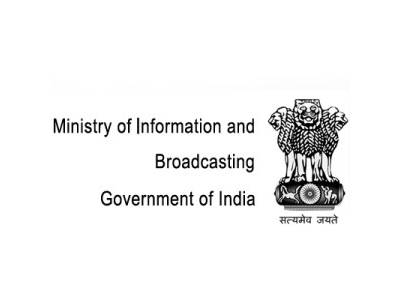Mapping the piracy scourge Part 1: From theatres to Telegram
Recently, the producers of ‘Kurup’, a Malayalam movie about India’s longest wanted fugitive named Sukumara Kurup, took movie piracy head-on by going after the pirates who were uploading the illegal versions of the film on the Telegram app and websites. Anti-piracy experts deployed by the film’s producers found that while the visuals of the movie were shot from a cinema in Tamil Nadu, the audio was recorded from Kerala. Well, if we thought that the old-school theatrical piracy has faded into oblivion, it simply has not. It is still alive and kicking in its vicious form along with the new-age avatars of piracy, ably assisted by file-sharing apps, screen recording apps, torrent networks, etc.
Also Read: No shoot at site, please – How safe are Indian film sets?
Industry experts say that in the above case, it is possible to identify the particular theatre from where the visuals were shot illegally.
“You don’t allow water bottles in theatres. Then how can piracy happen inside theatres without your knowledge? Who should be arrested? The projectionist? Here, the theatre owner should be liable for this. They can discreetly show one full movie in the middle of the night for pirating the movie content. Here, theatre owners have to be responsible. They cannot say that the entire movie was shown without their knowledge,” said Mugil Chandran of Block X Technologies, the company behind tracking down the ‘Kurup’ piracy.
The fact that the film industry has not been able to put an end to even the oldest form of piracy throws up many pertinent questions that beg to be answered. Is there no definitive solution to the piracy problem? What is preventing the industry from achieving that? Adgully is attempting to answer these questions and much more in this four-part indepth series on Film Piracy.
The problem of film piracy is so rampant and pervasive that it is difficult to look for simple solutions, because the issue is manifold, involving technical, cultural, social, legal, and transnational aspects.
According to Mugil Chandran, it is possible to identify such theatres that enable piracy. But, he said, in old-school theatrical piracy, producers are somewhat hesitant to exercise their rights over their films, which is very strange.
“There is a digital signature of the film available through Qube or whichever platform the film is projected from. To get the digital signature, you have to spend some money in order to trace the theatre. And once the theatre is identified, legal action can be taken against it. Apart from a handful of filmmakers, nobody really pursues this seriously. I have not been able to see active action from producers’ or distributors’ councils. If you need to shut down a theatre, shut it down. But, the industry is not organised enough to take collective action. They don’t do it, because the next release will get affected; the relationship with the distributor will get affected. These are issues affecting the film industry at multiple levels, let alone privacy,” he added.
Diving deep into the many issues afflicting the industry, Mugil blamed the opacity with which the industry functions. He said that even official ticketing is not regularised to this day. According to him, nobody still knows what a film still is earning; there is no regularisation.
“You can’t blame the government, because it has become an industry that willingly doesn’t want to regularise, where you don’t want the actual numbers to come. You don’t want to be visible. What does a film earn? Nobody knows. This is part of the industry culture. ‘I am for myself; my film is my problem.’ There is this old-school mafia method of running. Small theatres are willing. But big theatre chains are not willing to give actual numbers. This is not the case with Hollywood, where they publicise the actual numbers. Several companies have come to India trying to regularise our box office, but they failed,” said Mugil.
Piracy in the digital era
It is ironic that technology, in a way, has democratised piracy. The act of piracy is no more the prerogative of a selective tech-savvy lot alone. The arrival of new technologies has thrown up new vistas for pirates, with a plethora of platforms acting as sly facilitators in the dark underbelly of piracy. Multiple apps that enable screen recording and hiding IPs (VPN), and file-sharing platforms like Telegram have become so ubiquitous that anyone with a modicum of understanding can indulge in piracy.
Today, it is not uncommon to see movies slated to be released on streaming platforms being leaked much earlier. So much so that earlier this year, Bollywood star Salman Khan came out with a video, urging fans to say no to piracy, prior to the release of his movie, ‘Radhe: Your Most Wanted Bhai’. ‘Radhe’ had a hybrid release on OTT (Zee Plex) and cinema halls in mid-May 2021. Still, the movie ended up being pirated, which made Salman and his legal team take firm action against those indulging in pirating the movie, which was released on Eid. As per media reports, FIR was filed against some people who were selling the pirated version of ‘Radhe’ on Whatsapp for as less as Rs 50.
It is difficult to fathom the quantum of piracy. On an average, anti-piracy agents like Mugil Chandran bring down around 10,000 websites and 60,000 Telegram groups in a month. They alert the servers that host these websites that carry pirated content. Many times the same sites keep reappearing with different names.
The loss of revenue for OTT players by way of piracy in India may hit $3.08 billion by 2022, according to a report by Digital TV Research.
“It is more rampant than ever. Every second person is a pirate today. There are communities, which share information about a new movie being available. Those who are hell-bent on watching pirated movies will find a way to do that, come what may be. They will never go to theatres to watch. It is their pride. It is a cultural thing,” elaborated Mugil Chandran.
Echoing the same sentiment, Prince Pictures producer S Lakshman Kumar said that people get a thrill out of watching movies on the first day without paying for it.
“The thrill of breaking the system is a primary factor for youngsters to encourage piracy. It is also reflective of our society and our ethics. They don’t generally steal something from a shop because they know the value of it. People think cinema is in the air and don’t see it as the property of someone. This needs to change. Moral education and value lessons on a daily basis should be an integral part of school curriculums to bring about a slow but sure change,” he suggested.
According to Lakshman Kumar, India is the largest producer of films with its Bollywood and regional movies. While piracy happens in all places, he explained, countries with non-existent copyright laws conveniently make it viable.
He further pointed out, “A considerable chunk of pirated content is hosted from Scandinavian countries with lax copyright laws and enforcement. There is no way we can track and remove every link and unauthorized copy of a film. This is a legal plus-technical-social issue.”
These sites are sitting out of some Scandinavian countries like the Netherlands, which vouch for freedom of speech and piracy of content, said Mugil Chandran. The good thing, however, is that these countries have now started acknowledging the gravity of the issue, he noted.
“What happens is that when they block a site, it pops up somewhere else. But it’s only within the piracy community that such information is available with a small group of people who keep going to the chat groups checking for pirated movies. It is not the main audience. That’s why today, website-based piracy is less than 10-15% of actual piracy. Another 20-25% comes from torrents, which again are linked to certain websites. As anti-piracy agents, we have many methods to stop torrents, like putting corrupted links or fake torrents. Those sites that allow live-streaming are the latest headache. You don’t need to download it anymore. That’s where the majority illegally watch content today. The culture of downloading is over. And there are illegal apps which provide all major streamers. This is a problem that needs to be solved. But that app is available on the app store, not on the dark web. That is a challenge and needs to be regulated,” he added.
Indeed, there is a deep-rooted cultural issue as well. As Lakshman Kumar pointed out, people who watch or download pirated content do not think it is wrong. People are so attuned to it that it has become normalised.
Mumbai Movie Studios CEO Naveen Chandra agreed that one of the reasons for the pervasive nature of piracy is the arrival of streaming platforms. “When a film is released on a streaming service people watch it across the country on the same day. Earlier, those who wanted to pirate films used to take a ticket, get inside the theatre and capture the movie. Now they are able to do high-quality streaming better than theatrical films,” said Chandra.
Tomorrow: Part 2 of this series will take a look at the legal provisions available to tackle piracy and whether they have been adequate to curb this menace. Also, what are the alternate steps that producers are taking to crack down on piracy.














Share
Facebook
YouTube
Tweet
Twitter
LinkedIn